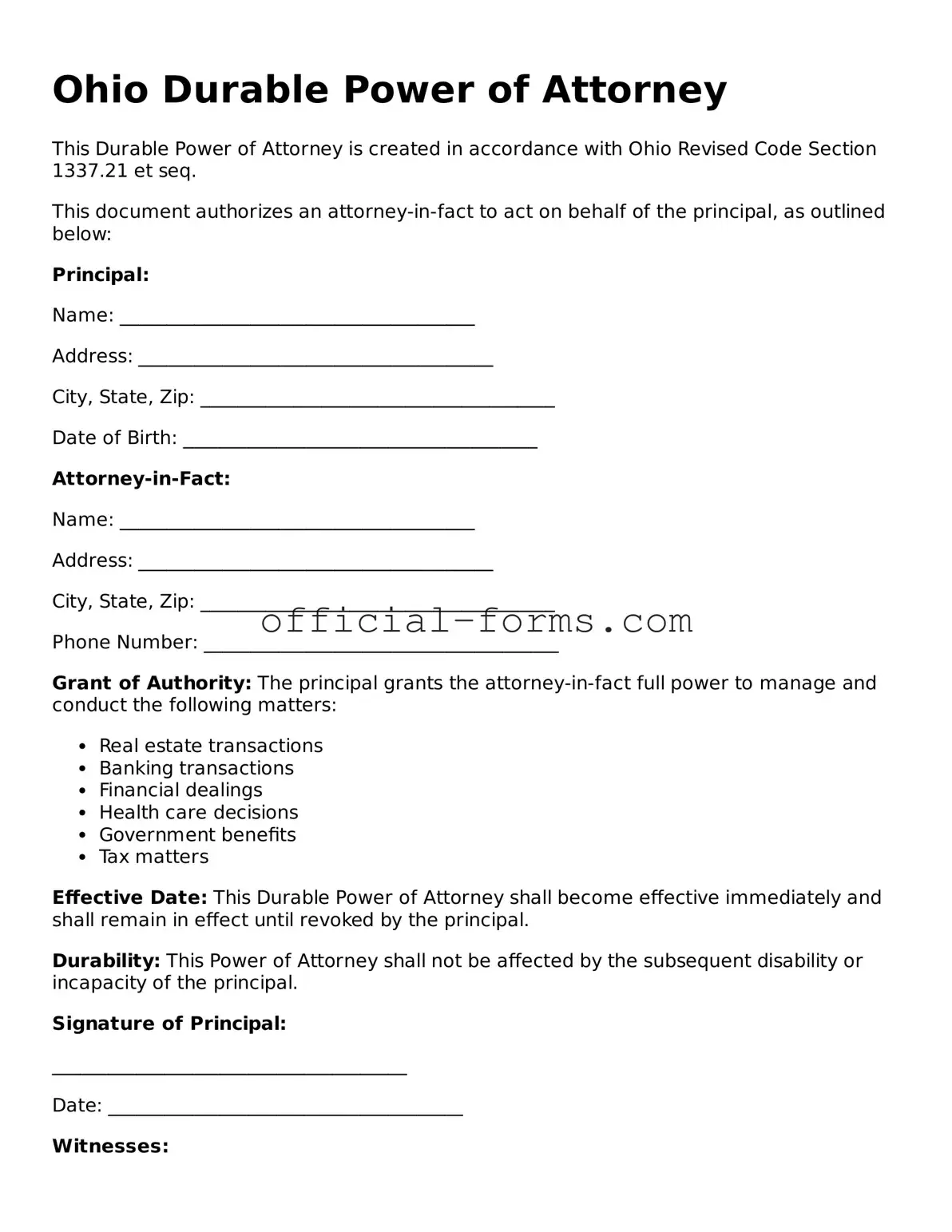Filling out the Ohio Durable Power of Attorney form can be a straightforward process, but many individuals make common mistakes that can lead to complications. One frequent error is failing to specify the powers granted to the agent. Without clear instructions, the agent may not have the authority to make critical decisions when needed.
Another mistake involves neglecting to date the document. A missing date can create confusion about when the powers become effective. It's essential to ensure that the form is dated correctly to avoid any disputes regarding its validity.
Many people overlook the importance of having witnesses or a notary present during the signing of the document. Ohio law requires either two witnesses or a notary public to validate the Durable Power of Attorney. Without this, the form may be deemed invalid, leaving the principal’s wishes unfulfilled.
Additionally, individuals often forget to communicate their intentions with the appointed agent. An agent may not fully understand their responsibilities or the principal's wishes if there is no prior discussion. This lack of communication can lead to decisions that do not align with the principal's desires.
Another common error is using outdated forms. Legal documents can change over time, and using an old version may not comply with current laws. Always ensure that the most recent version of the form is used to avoid any legal issues.
Some individuals fail to consider the implications of granting broad powers. While it may seem convenient to give an agent sweeping authority, it can also lead to misuse or abuse of power. It is crucial to carefully define the scope of authority to protect one's interests.
People sometimes neglect to review the form for errors after completion. Typos or incorrect information can invalidate the document or create confusion. A thorough review can catch these mistakes before they become problematic.
Failing to keep copies of the signed document is another mistake. It is vital to retain a copy for personal records and to provide copies to the agent and relevant institutions. Without copies, the agent may struggle to prove their authority when making decisions.
Moreover, some individuals forget to update the document after significant life changes, such as marriage, divorce, or the death of a previously appointed agent. Regularly reviewing and updating the Durable Power of Attorney ensures that it reflects current wishes and circumstances.
Finally, many people do not seek legal advice when filling out the form. While it may seem simple, the nuances of the Durable Power of Attorney can be complex. Consulting with a legal professional can help avoid pitfalls and ensure that the document serves its intended purpose effectively.
